Relationship of Live Shell to Dead "Brown" Shell
5.3 Link to Recruitment and Shell Substrate
The relationship of
(A) Pocomoke and Tangier Sounds: y = 5990.2 + 0.09x, r2 = 0.40
(B) Great Wicomico River: y = -13609 + 0.31x, r2 = 0.64
(C) Rappahannock River: y = 5079.7 + 0.07x, r2 = 0.33
(D) Piankatank River: y = 33.4 + 0.16x, r2 = 0.68
(E) Mobjack Bay: y = 5057.5 + 0.08x, r2 = 0.29
(F) York River: y = 31307 + 0.05x, r2 = 0.29
(G) James River: y = -69275 + 0.25x, r2 = 0.75
(H) Elizabeth and Lafayette Rivers: y = 12409 + 0.04x, r2 = 0.29
Notable among the descriptors are the slopes for the Great Wicomico and James Rivers in the 0.247-0.281 range, higher than that for the Piankatank (0.156), but all with r2 values >0.60. The remaining locations exhibited both lower slopes (<0.1) and lower r2 values (<0.60). The former grouping is generally considered to have the highest standing stock per unit area and
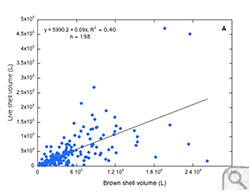 |
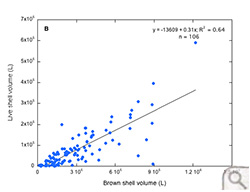 |
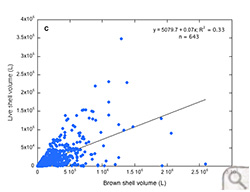 |
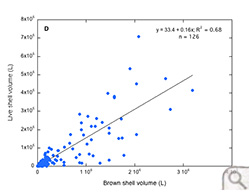 |
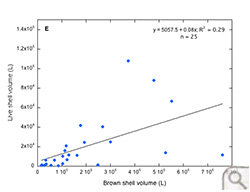 |
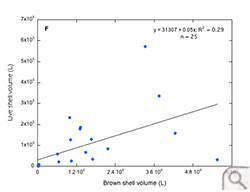 |
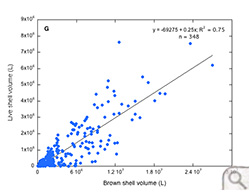 |
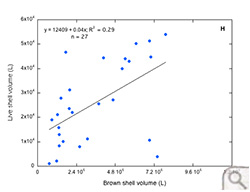 |

